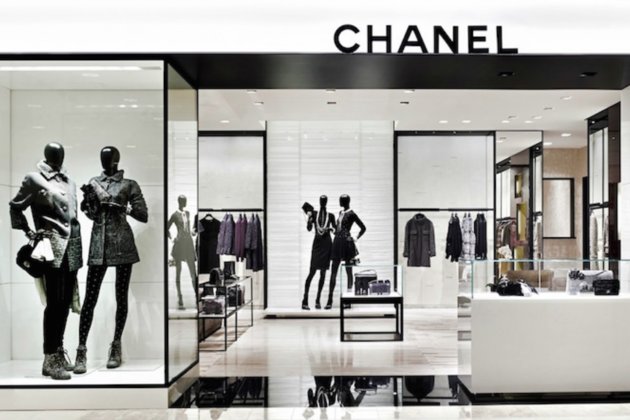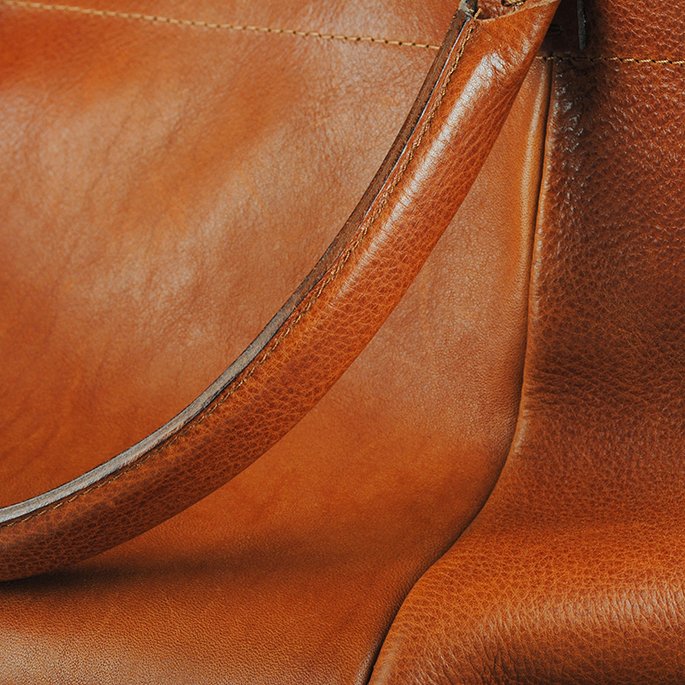Informer
A Fashionista's Guide to British Politics - by Tamara Cincik and Rafaella de Freitas
At first glance, politics and fashion are polar opposites, and political affairs may seem irrelevant to someone in the fashion industry, especially in the creative aspect of the sector. A designer or stylist might think they are removed from politics: except as Brexit shows, our previous freedom of movement for goods (textiles) and services (work in Europe) is a part of the on-going Brexit negotiations. Game of Thrones has been discussed in the Chamber (what you see on TV for PM’s Question Time where MPs vote) multiple times more than fashion.
From Queen to Comp: Richard Quinn Uses His Fashion Show as an Advocacy for Arts Education - By Tamara Cincik
How do you take things up a notch when last season Her Majesty the Queen excited even the most jaded amongst us by attending her first ever fashion show, for Richard Quinn at London Fashion Week. I did wonder how she would take the floral gimp masks, but her enthusiasm and smiles were endless. We all left feeling truly like the Queen had shone her support on UK fashion, at a time when during Brexit and after austerity, it has been a difficult time for our industry.
Teatum Jones: Round Table not Runway
Finalists in the 2018 Green Carpet Franca Sozzani emerging designer Award, International Woolmark Prize and British Fashion Trust Winners Teatum Jones, have just been appointed by the BFC as the 'Positive Fashion’ representatives for London Fashion Week Spring Summer 2019. This season Teatum Jones have partnered with Youtube, Google and The British Fashion Council in support of United Nations Women for their latest collection ‘Global Womanhood Part Two, 16 Days Of Activism.’
#Iamvisible: Grazia UK’s Big Fashion Issue celebrates disability, the most underrepresented consumer group - By Lottie Jackson
Over the past year, the fashion industry has made huge strides to becoming more inclusive, committing itself to represent a wide spectrum of genders, ethnicities and cultures. However, there is one consumer group that remains severely underrepresented- individuals with disabilities. The release of Grazia’s Big Fashion Issue this week aimed to address this exclusion.
Chanel is Coming to London: The Parisian Brand is Moving Operations to London Whilst Companies Plan to Leave the UK - By Sol Azcune
Chanel has decided to simplify its structure by moving its global corporate operations to a single location, London. Currently, Chanel’s international operations, such as financial, legal and accounting, are spread across the globe, although most take place in New York, the city which serves as the brand’s global headquarters.
Weekly News Round-Up: September 10th-16
Expectations for London Fashion Week, the stepping down of Alibaba’s Chairman and decisions made on the Directive on Copyright in the Digital Single Market - the news of this week reflects anticipation and speculation on the changes happening across the industry.
FR Event Success: Body Image and Identity Politics
Last Wednesday Fashion Roundtable partnered with The Hox Holborn for our Body Image and Identity Politics Event. The panel, chaired by Tamara Cincik and featuring Caryn Franklin MBE, Farrah Storr Editor of Cosmopolitan, Chidera Eggerue intersectional feminist and founder of #saggyboobsmatter, Jules Von Hep celebrity spray tanner and body positivity advocate, Grace Woodward TV presenter and stylist and Jacob Mallison Bird Drag artist, model and Oxford PHD student, discussed identity and body positive body image with a focus on inclusion, diversity and representation.
Breaking The BAME Barriers At Grassroots. An Op-Ed by CARAMEL ROCK
Caramel Rock, a London based fashion and creative arts training centre and registered charity is pleased to announce that as the new academic year approaches they will again be launching our 12-week NVQ Level 2/3 Fashion Garment Construction course. Starting on 25 September, three days per week, the course aims to help young people gain a foothold into fashion and the creative arts sector.
Read their full press release here.
How Augmented Reality is poised to transform the future of retail, enhance accessibility for disabled consumers, and release the potential of the purple pound - By Lottie Jackson
Fashion Roundtable is committed to highlighting the lack of disability representation throughout the fashion industry. You might assume this only applies to fashion campaigns which almost exclusively feature able-bodied models, and as a result disregard the aesthetic potential of the disabled body. But in reality, fashion’s poor track record for representing disabilities runs far deeper that the images we see promoted across fashion media.
There are still many logistical barriers facing less-abled individuals, like myself, who want to access fashion but simply cannot due to inadequate provision in retail spaces- this encompasses anything from insufficient staff training, to physical obstacles (such as stairs, no seating, queues and inaccessible clothing rails). A study by the Extra Costs Commission revealed that 75% of disabled customers have left a shop because of poor service or access, and that UK companies risk losing £420 million a week in sales.
Lottie Jackson explores how AR can help disabled customers.
Fashion and Intellectual Property Law: How will Brexit damage the British Fashion Industry? By Lucy Siers
Intellectual Property rights within fashion form a crucial foundation to the industry and have the potential to generate material value for fashion designers. However, the impending loom of Brexit is generating widespread fear throughout the industry. Fear of what the effect of exiting the EU will be on UK IP design rights, and how this could damage the UK fashion and design industry.
The main concern is the potential loss of the protection provided by the Unregistered Community Design Right. This could, in turn, undermine the global prominence of events such as London Fashion Week.
DEXEU: White Paper Summaries
The Department for Exiting the European Union has provided Fashion Roundtable with summaries of the White Paper chapters. The summaries include details on The White Paper itself and key points on how the following will be affected: professional business services; manufactured goods; framework for mobility; customs; cooperative accords.
Creativity and Data: The Future of Fashion Design by Rafaella de Freitas
In August 2017 Amazon released a report detailing how a team of programmers developed an Artificial Intelligence (AI) system that was able to generate new images of products from the input of product category (male or female tops, bottoms or shoes) and user style, determined by analysis or a number of images associated to the user such as online purchase history. One year later, and the potential of designer algorithms remains a trending topic.
ELLE UK September Issue Review - By Jodi Muter-Hamilton & Anna Fitzpatrick
ELLE UK September Issue Review - By Black Neon Digital's Jodi Muter-Hamilton & Fashion Roundtable's Sustainability Expert Anna Fitzpatrick
Artificial Intelligence and The Sustainable Revolution in Fashion - By Rafaella de Freitas
How can AI influence the fashion industry? Rafaella de Freitas explores how AI is expected to streamline supply chains, improve sales forecasting and provide a more personalised shopping experience to customers.
Why Racism is So Entrenched in The Fashion Industry? Article by Elizabeth Segran for Fast Company
The fashion community has shown that it is willing to fight for social justice and progressive causes. So why hasn’t it done more to grapple with racism in its own ranks? Article by Elizabeth Segran for Fast Company.
What Does Creative Diversity Really Mean? Exploring The Research of The Design Council – By Lucy Siers
The Design Council’s recent design economy research has supported the message that a more diverse workforce will lead to a more diverse output and wider audience appreciation. The Design Council has added depth to this understanding by uncovering further statistics and underpinning their message with both the positives and negatives of a diverse design workforce. The Design Council explains that a more diverse workforce will be able to understand the needs of an increasingly diverse population.
Using both the full Design Economy 2018 report and their article on the link between diversity and business performance, Fashion Roundtable looks to break down their findings and view them from the perspective of the fashion industry.
The Design Council's Design Economy Report 2018
The design economy is 78% male, a higher figure than for the wider UK workforce (53% male).
”The design economy employs a slightly higher proportion of people from Black, Asian and Minority Ethnic (BAME) groups than are employed in the wider UK economy (13% compared with 11%), however there is some indication that BAME designers are less likely to be in senior roles. More research is needed to understand the extent of barriers to BAME designers’ progression and the mechanisms by which these might operate."
Roger Saul: Founder of Mulberry On The House of Fraser Deal.
“You’ve got Gucci, Prada, Ralph Lauren, Diesel; a large number of good, high-end brands that have good operations that have been hit by this,” Mr Saul said.
“Because House of Fraser has a stretch throughout the whole of the UK with its store group, effectively many brands have chosen that as their route to the market or consumer around the UK, outside of London where they have their own stores.
“So it does mean that this is a fundamental change to how retailing will work and brands will have to think very hard, ‘do I stay with Mike [Ashley] in his new form, what will his new form be?”
Luxury brands still “without doubt” need to have an offline presence despite retail sales increasingly shift online, Mr Saul said. “You’ve got to have clicks, bricks and mortar.”
Nothing Will Come of Nothing, Speak Again, Or What A No Deal Brexit Looks Like.
For the fashion sector, which like farming operates on low margins for most of its products and services, ongoing competition looks increasingly challenging, under these no-deal terms. Whilst the exact landscape for goods exported and imported remains largely unknown, it is the services arm of the sector which is likely to face the greatest punishment.
Fashion Roundtable x The Hox Holborn
Bev Malik: “In reality is that it’s actually the negative practice of fat shaming, not feeling included in a fashion conversation and feeling kind of left out, that’s a kind of emotional scar on our society..”




















